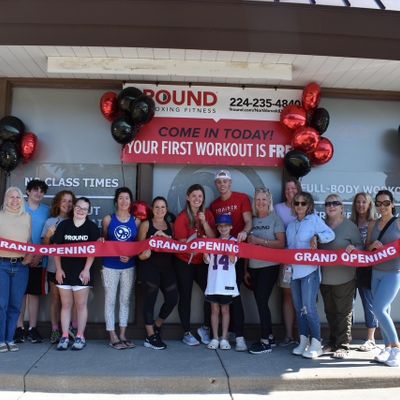How Long Does It Take to Build Muscle?

Odds are any fitness professional you’ve encountered, whether that’s a certified personal trainer or your favorite gym-tok influencer, has mentioned the importance of building muscle. But what’s rarely talked about is how long it takes to see that muscle growth, even with a KILLER exercise routine. If you’re curious to know how long it will take to see your #gains, then keep reading to learn more about muscle growth and some tips to improve your results.
Why Do You Want More Muscle in the First Place?
There are usually two distinct goals people have for building muscle, which are to build “lean” muscle or to build “bulky” muscle. Although, these terms are slightly misleading, as all muscle is considered lean because it does not contain fat. What most people want to achieve is actually lean body mass, which is the combined weight of muscle, bone, ligaments, tendons, and internal organs. Building lean body mass helps you improve your overall body composition by lowering fat mass and increasing muscle mass, which can be both “lean” or “bulky” to accomplish the goal.
Of course, there are numerous benefits to building more muscle mass—but one of the main reasons is because it helps you burn more calories inside and outside the gym. This helps improves weight loss and/or weight management. Not only do muscle tissues burn more calories compared to fat tissues during physical activity, but they also enhance your calorie burn after the gym due to EPOC, or excess post-exercise oxygen consumption. In short, EPOC is the body’s process of returning back to a resting state after exercise. Research has shown that strength training, especially when incorporated as part of a HIIT-style workout like 9Round, can enhance and extend EPOC.
Of course, burning more calories isn’t the only benefit of building more muscle. Here are a few additional benefits to get excited about:
- Appear leaner, more toned, and have better muscle definition (a.k.a. increased lean body mass)
- Improve coordination, balance, and posture
- Slow down age-related muscle loss
- Improve bone health
How Muscle Growth Happens
Your muscles are made of tiny fibers that contract when you perform any given movement. During exercise, the stress put on your muscles causes micro-tears in these fibers. When your body returns to rest, it will work to repair these micro-tears and fuse your muscle fibers back together. During this process, your body will also lay down new proteins within each muscle cell, helping them grow bigger and stronger, so they can better handle that level of stress in the future. The increase in muscular size achieved through exercise is also referred to as hypertrophy.
Keep in mind, the process of building muscle requires your body to deposit more protein than it breakdowns during exercise. This makes a healthy diet with adequate protein consumption, from animal or plant-based sources, incredibly important, as it will benefit muscle growth. In fact, if you are not getting enough protein in your diet, you will actually lose muscle mass instead. So, how do you make sure you’re getting enough protein in your diet? You can simply follow the recommended goal for protein intake, which is 0.5 to 0.8 grams of protein per pound of body weight per day.
How Long It Takes to Build Muscle
As you may have already guessed, there is no one-size-fits-all timeline for muscle growth because each person’s experience will differ based on certain factors, such as:
- Age and fitness level
- Body composition
- Exercise type, duration, and intensity
- Daily protein intake and availability of amino acids and other nutrients
- Hormones, especially growth hormone and testosterone
- Sleep schedule—yes, this affects muscle growth because a significant portion of the repair process happens during sleep! It’s recommended to get at least 8 hours of sleep after an intense workout for adequate recovery time.
A beginner who is consistently incorporating strength training at least three days a week and getting enough protein may start seeing the visible signs of hypertrophy around 4-8 weeks, although the process does begin in the early stages of training. In general, most people tend to notice the changes happening with their bodies around 8-12 weeks.
One way to ensure you’re on the right track is to follow the recommended exercise guidelines of getting at least 150 minutes of moderate-intensity cardiorespiratory exercise or 75 minutes of vigorous-intensity exercise. You can also track your fitness progress using body composition analyzers, such as the InBody scales at many of our 9Round studios, which show you a breakdown of muscle and fat content with each scan. Completing multiple scans over the course of your training can show you changes in muscle and fat mass over time, even when those changes aren’t yet visible in your appearance.
The good news is three 9Round workouts per week satisfy the guidelines above while also giving you plenty of resistance training along the way, thanks to our incorporation of traditional weights and heavy kickboxing bags. If you’re ready to learn more about muscle growth and how 9Round can help you build lean body mass with our kickboxing-themed workouts, then schedule your free introductory session now at your local studio!


